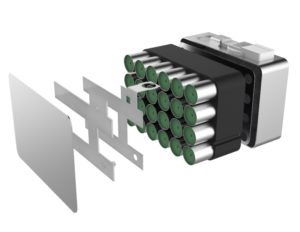A new startup is showing how to make batteries cheaper—and safer
QuartzAkshat Rathi
June 5, 2018
Christina Lampe-Önnerud has been called the “Queen of Batteries.” She’s a Swedish chemist and entrepreneur who built one battery company (called Boston Power), sold it, and then founded another, Cadenza Innovation. She is now focused on making batteries cheaper and safer.
The core of Cadenza’s technology is not the battery itself, but all the peripherals that make a battery usable in practical applications. These peripherals are a major part of any battery that you might find in, say, a car, or on a power grid.
For example, the current price of commercial battery packs used in electric cars range between $200/kWh and $400/kWh. But only about 75% of that cost is for the battery cells themselves, says Ravi Manghani of Wood Mackenzie Power & Renewables. The remainder is the cost of putting those small battery cells together in modules and then putting many modules in battery packs.
Batteries are inherently risky, because they are made of energy-dense materials. But they can be made safer through novel battery-pack designs. But trying to save money on either battery development or battery safety can result in costly accidents. Remember when Samsung Galaxy Note 7s were exploding in people’s pockets?
Cadenza’s innovation is what it calls “super-cell technology,” which is essentially a battery case made from the same sort of composite ceramic material used in airplane “black boxes,” according to Lampe-Önnerud. Its job is to stop the spread of any fires that might occur if one of the battery cells inside suffers what battery chemists call a “thermal runaway.”
On the outside, the box is an “overcharge” disconnector, which in case of accidents, much like a fuse, shuts down the particular pack’s electrical output, saving the device or car from excess charge. Inside the box, cylindrical battery cells are protected by an aluminum sheet, which is housed in another ceramic composite that can prevent the transfer of heat from a battery in thermal runaway.
Cadenza Innovation
The US government’s research agency for advanced energy technology, ARPA-E, says that once the cost of a battery falls to $125/kWh, electric cars will be competitive with gasoline-powered cars in all settings. In 2014, ARPA-E gave Cadenza $4 million to demonstrate that it could produce a battery pack—including battery cells and all the peripherals—that would cost less than $125/kWh. In March of this year, Cadenza published its report (pdf) saying that its super-cell technology can indeed hit that point.
Meanwhile, New York state’s energy research body NYSERDA has today (June 5) announced that it will partner with Lampe-Önnerud’s company to build a demonstration unit to store energy on the grid. Cadenza will get $1 million from NYSERDA to build the unit in White Plains (following a technical report Cadenza published in July last year addressing NYSERDA’s needs). Unlike ARPA-E, NYSERDA has more room on battery costs. They require that Cadenza batteries prove that they can serve the electric grid profitably at costs of $380/kWh. (The difference between the price points is so large because ARPA-E doesn’t have a strict timeline to reach it, whereas NYSERDA does.)
The size of Cadenza’s White Plains battery is modest: about 200 kWh in energy capacity and 50 kW in power capacity, which is enough to power 40 homes for a few hours. Despite NYPA’s reasonable cost goals, Venkat Viswanathan, a battery expert at Carnegie Mellon University, believes that for Cadenza to deliver on its “cheaper and safer” goal, it will need to show that it can do so at much larger scale than the demo plant at White Plains. And it will face of growing competition from startups such as Romeo Power, which is making similar promises.
Cadenza hopes to land contracts with New York state, which is the fourth US state to set energy-storage targets, according to policy group REN21’s 2018 Global Status Report. Andrew Cuomo, the state’s governor, pledged in January that New York would build 1,500 MW of energy-storage capacity by 2025.
The startup’s eventual goal is to provide super-cell technology to battery manufacturers around the world. Lampe-Önnerud says that later this year Cadenza will be announcing a technology-licensing deal with a number of global battery makers.
###
